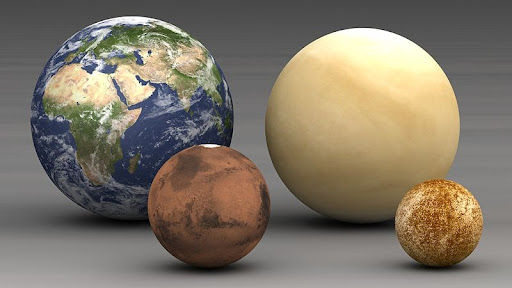Introduction
Among the countless celestial bodies in the universe, terrestrial planets hold a special place in both science and human imagination. These rocky planets are similar to Earth in composition and structure, offering key insights into how planets form, evolve, and potentially harbor life. In this article, we will explore what terrestrial planets are, how they differ from gas giants, their presence in our solar system, and the exciting discoveries being made about terrestrial exoplanets beyond.
What Are Terrestrial Planets?
Terrestrial planets are primarily composed of rock and metal and have solid surfaces. These planets generally have a central metallic core, a silicate mantle, and a rocky crust.
Characteristics of Terrestrial Planets
- Solid Surface
- This makes them ideal candidates for landers and rovers in space exploration missions.
- Relatively Small Size
- They typically have less gravitational pull and thinner atmospheres.
- Proximity to Their Star
- In most solar systems, terrestrial planets are found closer to their parent star, inside the so-called frost line, where it is too warm for volatile compounds like water, ammonia, or methane to condense into ice.
Terrestrial Planets in Our Solar System
- Venus
- However, its surface conditions are harsh, with scorching temperatures and a thick, toxic atmosphere rich in carbon dioxide.
- Earth
- The only known planet to support life. It has a balanced climate system, a protective magnetic field, and abundant water.
- Mars
- Known as the Red Planet, Mars has captured human interest due to its potential for past or even present life. It has polar ice caps, seasonal weather, and signs of ancient rivers and lakes.
Comparison with Gas Giants
Unlike terrestrial planets, gas giants like Jupiter and Saturn do not have a solid surface and are composed mostly of hydrogen and helium. They have many moons, strong magnetic fields, and thick atmospheres. In
The Search for Terrestrial Exoplanets
The discovery of terrestrial planets beyond our solar system, known as exoplanets, has revolutionized astronomy. Using telescopes like Kepler and the James Webb Space Telescope, scientists have identified thousands of exoplanets, many of which are rocky like Earth.
Some of these planets lie within their star’s habitable zone, the region where conditions might be right for liquid water to exist.
Examples of Promising Terrestrial Exoplanets
- TRAPPIST-1 system: A solar system with seven Earth-sized terrestrial planets, some of which could contain water.
Why Terrestrial Planets Matter
Terrestrial planets help us understand how Earth was formed and how life might begin elsewhere. Moreover, the study of terrestrial exoplanets increases the chances of discovering alien life and even finding planets suitable for human colonization.
Challenges in Studying Terrestrial Planets
Exploring terrestrial planets, especially those outside our solar system, poses major challenges:
- Distance: Even the nearest exoplanets are light-years away.
- Detection: Rocky planets are small and often lost in the glare of their parent stars.
- Technology Limits: Despite advancements, observing fine details like surface features or atmospheres requires extremely precise instruments.
Future Missions and Research
Upcoming missions and observatories such as:
- NASA’s Artemis Program (Moon and Mars)
- ESA’s PLATO (Planetary Transits and Oscillations of stars)
- The Extremely Large Telescope (ELT)
…are expected to expand our knowledge of terrestrial planets. These efforts may eventually answer fundamental questions about habitability, planetary formation, and the uniqueness of Earth.
Conclusion
Terrestrial planets are more than just rocky worlds; they are key to unraveling the mysteries of the universe. From Mercury to Mars and far beyond our solar system, these planets offer exciting opportunities for exploration and discovery. As our technology advances, so too does our ability to find other “Earths” and perhaps even discover life among the stars. In this cosmic journey, terrestrial planets remain at the forefront of scientific exploration.



